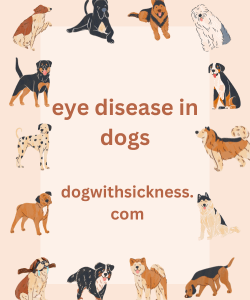Introduction eye diseases in dogs:-
Like with people, dogs need good vision, but most dog owners are unaware of these conditions and their symptoms, making it difficult for them to notice when their pets are having eye health problems.
Dogs engage with their surroundings largely through their sense of sight. If they have good eyesight, they can navigate their environment, identify possible risks, and communicate effectively with other animals and their people. early detection of these diseases and timely medical intervention. The following canine eye conditions are typical:
Common Eye Diseases in Cannine:
Conjunctivitis:
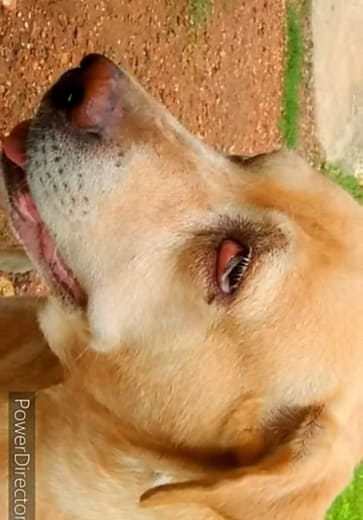

Canine cataracts:-
The cataract can impair one or both of the eye’s lenses, causing them to become clouded. Although some cataracts can result in blindness, most cataracts are hereditary. Contact your veterinarian as soon as possible if you suspect your dog has cataracts. Cataract mostly affects elderly dogs and diabetic pets. Surgery is the only therapy for this condition.
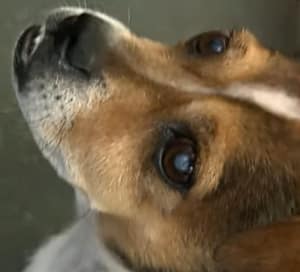

Glaucoma:
The fluid in a healthy eye moves in and out to maintain eye pressure; however, with glaucoma, too much fluid enters the eye or there is a drainage issue, which builds up a lot of pressure in the eye.
The symptoms include redness in the eyes, discomfort, and tiny vessels visible on a white area of the eye. Over time, the eye gets bigger and more painful, and the cornea may expand.
In the early stages, medication can manage glaucoma; however, if medication is unable to control discomfort or eye pressure, a veterinarian may advise “enucleation” for the removal of the affected eye.
Managing the Second Eye:
Since the second eye may also be at risk in primary glaucoma instances, it is crucial to monitor and take care of it as well.

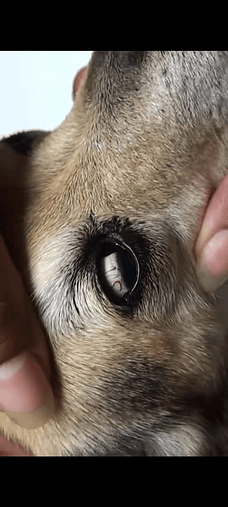
Cherry eye:
Dogs have three eyelids, and the cherry eye is the result of a prolapsed or displaced tear gland on the third eyelid. Although it can occur with any dog breed, it is typically more frequent in particular breeds, such as English bulldogs, pugs, bullmastiffs, and Newfoundlands, etc.

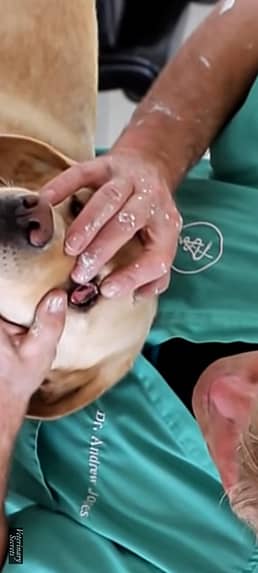
Corneal ulcers:-
The cornea is the transparent, dome-shaped front section of the eye that focuses light into its multilayered structure. A corneal ulcer is a disorder in which the superficial layer is removed owing to an infection or scrape, resulting in a lesion behind the eye. Corneal ulcers can be caused by an unintentional injury, a genetic problem, aging, or another eye disorder. In the early stages, antibiotic drops and ointments can be utilized, but in severe cases, a transplant may be necessary.
symptoms:
increased tearing, redness, eye discharge, eye rubbing and pawing, foggy vision, vision loss

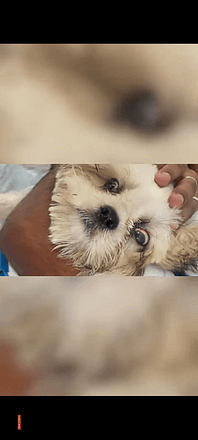
Dry Eye (Keratoconjunctivitis Sicca):
diabetic dogs and dogs who are suffering from thyroid problems may suffer from dry eye disease it’s an autoimmune disorder on tear-producing glands that affect on eye surface which becomes red and itchy and if it is not treated early then is prone to ulcers and infections it can be treated by eye drops and ointments that can make tear gland active for tear production but in the severe case may requires surgery
Ectropion:
Ectropion is a condition that causes the lower eyelid to droop, fold, and slide away from the eye. It is a normal occurrence in certain breeds, but it can also occasionally cause inflammation, dry eye, and other eye diseases. Surgery is used as a therapy to rectify ectropion.
Entropion:
Eyelid rolling inward is a disorder known as entropion, which can affect both the upper and lower eyelids. This has a hereditary impact on certain breeds.
Surgery is the only way to cure it since it can result in inflammation, infection, and, in extreme circumstances, permanent corneal damage that causes the dog to lose their eyesight.

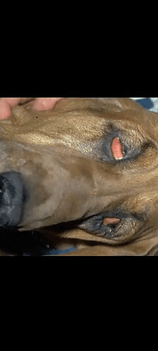

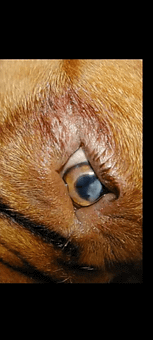
Retinal Diseases:-
Progressive retinal atrophy is a hereditary condition in dogs that affects the retina and causes blindness. There is no effective therapy. This ailment can strike suddenly at any age, but with simple precautions and approaches, we can preserve their quality of life.
You may learn about black skin disease in dogs and save your dog’s life.
Note: The advice on this page is meant for informative purposes only and does not represent medical advice for dogs. Please schedule an appointment with your veterinarian to ensure that your pet’s ailment is accurately diagnosed.
